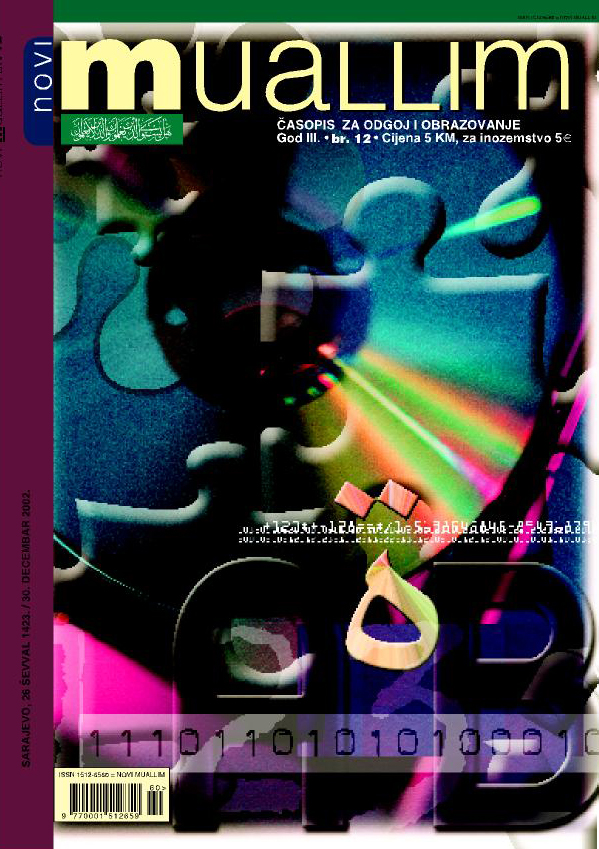GRAMATICAL AND STYLISTIC ANALYSIS OF THE SENTENCE OF THE QUR'AN
DOI:
https://doi.org/10.26340/muallim.v3i12.1478Abstract
Arabic language distinguishes two basic types of sentcnces: verb and noun sentence. The noun sentence begins with the noun while the verb sentence begins with the verb. Both types of sentences consist of two main parts: subject and predicate, which are followed by their component parts. The subject of the noun sentence in Arabic language is called al-muhtadau while the predicate is called al-habani. The subject of the verb sentence is called alfai'lu and the predicate -the verb itself -is callcd al-fi'lu. The sentence in Arabic language has the full meaning only if the main components of the sentence are included. It is, however, possible to omit one of those parts if the meaning is understood out of the context of the complete sentence. However, certain situations impose the need to include certain parts even when they can be omitted. This is known as the stylistic necessity (darnratun balagiyya). Certain languages have the fixed word order which serves for exprcssing the grammatical meanings. Other languages have free word order, which serves for expressing the stylistic values. The regular narration have a fixed word-order. This kind of narration starts with what is known, from the subject, towards expressing the unknown, the new. Therefore, the subject (along with thie words which togelher form the syntagma) is generally found at the first place. The predicate is connected to it (along with the words which together form the syntagma). The emotional narration has the distorted word order, in other words the first place in the sentence is usually taken by the word whose meaning is meant to be particularly stressed. Arabic language recognizes both structures/ organizations of the sentence: a grammatical organization where the first place is taken by the subject followed by the predicate and its component parts and a stylistic organization wilh the distorted word order where the places of the basic parts, the subject and the predicate as well as their component parts, are turned around. Additionally, Arabic language also identifies polysindeton and asyndeton sentence. Polysindenton is the stylistic figure of the poetic expression which consists of intentional multiplication of number of conjunctions. This allows for an emphasis of the certain word or expression. This also slows down the conjunctions thus lowering the intonation and rhythm of the sentence which gives a greater balance to the speech and increases its expressiveness. On the other hand, asyndeton occurs in the syntax, stylistics and poetics when the words, groups of words or the complete sentence, which are coordinated or enumerated, are placed one after the other without conjunctions. When the conjunctions are left out, the speech is livelier, the intonation and the rhythm of the sentence are accelerated. The Arabic classical stylistics recognizes three types of expression: concise, detailed ( extensive) and regular type. The first type is the type in which the number of words is no more no less but what is neccssary for the meaning to be understood. This represents the briefness in expression of the thought, a concise mode of speech ( day and piece i.e. what I earn -I eat). A detailed speech is quite the opposite. This mode consists of the expression of lhe thought with more words than necessary at the first glance. The third type is somewhere in between those two. It consists of the expression of the contents by using appropiate number of words or sentences without adding or omitting. This represents the basic type of expression of our thoughts. This mode serves as a measure to establish whether certain expression is detailed or concise. All of these types are present in the Qur'an, Arabic poetry as well as prose. This work examines each of these three types separately.
Downloads
Published
How to Cite
Issue
Section
License
Naknada:
a. Časopis ne naplaćuje naknadu za obradu članaka (APC) i naknadu za podnošenje članaka.
Autori koji objavljuju u ovom časopisu pristaju na sljedeće uvijete:
- Autori zadržavaju autorska prava i pružaju časopisu pravo prvog objavljivanja, pri čemu će rad jednu godinu po objavljivanju biti podložan licenci Creative Commons imenovanje koja omogućuje drugima da dijele rad uz uvijet navođenja autorstva i izvornog objavljivanja u ovom časopisu.
- Autori mogu izraditi zasebne, ugovorne aranžmane za ne-ekskluzivnu distribuciju rada objavljenog u časopisu (npr. postavljanje u institucionalni repozitorij ili objavljivanje u knjizi), uz navođenje da je rad izvorno objavljen u ovom časopisu.


